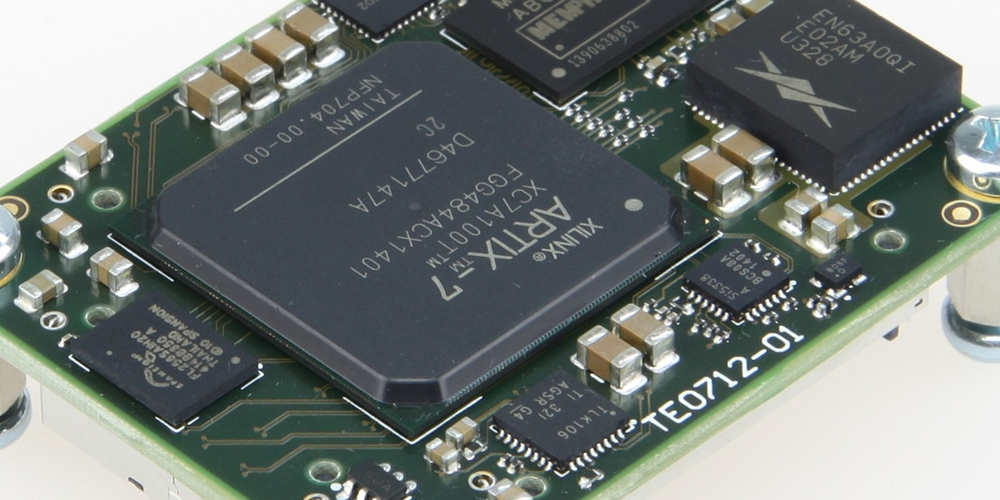Digital Signal Processing or DSP is a new yet innovative technology used across a variety of circuit board systems. It is often compared to previous solutions including but not limited to complex operations and task scheduling.
Digital circuit consumers have also leveraged the DSP Slices to facilitate the configuration of audio devices, digital image processing and image compression. In this article, you will learn more about how the DSP FPGA works and some of the benefits and potential downsides.
What is a DSP?
The full name is Digital Signal Processing. According to Wikipedia, a DSP is the “use of digital processing, such as by computers or more specialized digital signal processors.” These are used to carry out a wide range of signal processing operations.
Sensear adds that a DSP helps to facilitate the analysis, measurement and manipulation of the said signals by simply using the mathematical calculations.
What is the Difference between a DSP and an FPGA?

Digital Signal Processing (DSP) and Field Programmable Gate Array (FPGA) function differently, even though the two can be used together, depending on the design.
Certain differences and functionalities separate one from the other. Here are the common differences between a DSP and an FPGA:
1. Programming Language Differences
The two differ by the programming languages used for them. For example, the Field Programmable Gate Array (FPGA) is programmed with the extensive library of legacy codes that are optimized for different functions.
On the other hand, the Digital Signal Processing (DSP) uses the Standard C programming language.
2. The Cost of the Signal Processing Technology
Both the DSP and the FPGA are two of the common signal processing technologies. Their cost differences also help you to make a choice.
On the one hand, we have the FPGA costing more money than the DSP. However, it makes up for this by providing repurposing design that allows the circuit board to be reconfigured in different ways.
On the other hand, the DSP is one of the most affordable signal processing systems out there. In addition to the low costs, it is also available for different application uses. You just need to be mindful of the targeted applications or use cases because some application-centric uses tend to be costlier than the others.
3. Signal Processing Classifications
Although both the FPGA and DSP are signal processors, they are further differentiated based on their classes. For example, the DSP is generally known to be a class of specialized signal processors that are typically optimized for implementing the functions of the different DSP algorithms.
However, the same is not the case with the Field Programmable Gate Arrays (FPGAs), which simply offer a variety of logic resources for configuring the circuit boards. The programmable architecture of FPGAs enables the real-time changing or optimization of the boards, by combining a wide range of resources, including Block RAM and Configurable Logic Blocks (CLBs).
4. Operational Methods also Differ
The method of operating ore regulating the functionalities of the DSP and FPGA signal processors also differ. For example, DSPs are operated by using instruction-based signal processors to facilitate the capturing and transfer of data in the targeted applications.
FPGAs are operated or function by using clock-based signal processors that use a set of mathematical operations to process the incoming and outgoing data stream.
Components of Digital Signal Processing (DSP)
What is inside the DSP? Here are some of the common components you will find inside the Digital Signal Processing (DSP).
Input & Output
This is the “corridor” that connects the DSP with the “outside world.” Basically, it serves as the interfaces that connect the processors with external components.
For example, the DSP input & output can be used to facilitate the conversion of analog signals to digital signals before processing the same and converting it into the analog domain.
Program Memory
The program memory works by providing sufficient storage for the programs required by the processor to process, translate, or convert the data.
DSP Chip
This is the microchip that “houses” the different algorithms and calculations required of the DSP.
Compute Engine
This is the “computer” of the Digital Signal Processing. It oversees the processing or computation of all the mathematical functions that take place in the processor. The Compute Engine is also used to access the programs from the Program Memory and the data from the Data Memory.
Memory
As the name suggests, the “Memory” component in a DSP is where the algorithms of the processor are stored.
Data Memory
The data memory is dedicated to storing and processing the incoming data or information or data stream to be processed by the processor.
Benefits of Using DSP as a Signal Processor
Despite the differences in DSP FPGA, the former has some advantages over the latter. Here are some of the advantages of using the signal processing capabilities of the Digital Signal Processing (DSP).
FPGA Interfacing
The DSP FPGA connection is possible because using a Digital Signal Processing (DSP) provides a connection with the Field Programmable Gate Array (FPGA).
Cheaper Digital Signal Implementation
Cost plays an important role in the selection of a digital processor. In the case of DSP FPGA, you are able to get it cheaper because of its relatively cheap architecture. However, the costs can add up if you are looking to reconfigure the Digital Signal Processing (DSP).
Easier Audio-to-ML Translation
Using a DSP FPGA can make the process of translating or converting human audio and video signals into Machine Language (ML).
Drawbacks to DSP Usage
Using a Digital Signal Processing (DSP) also poses some challenges. Here are some of the common challenges or downsides to using a DSP for your digital processing needs:
- Heat dissipation is higher in DSPs because of the increased processing speed.
- DSP requires synchronization with the communication system before digital signals are detected.
- A Digital Signal Processing (DSP) does not function independently, because it requires the combination of DAC and ADC modules. These modules are used to enable the anti-aliasing filter and re-construction filter.
How to Choose DSP FPGA
The choice of whether to use a Digital Signal Processing (DSP) or a Field Programmable Gate Array (FPGA) can be difficult to make. These are some of the factors that should help influence your buying decision:
- Be sure of the estimated power consumption so you don’t buy one that uses up more power for the targeted applications.
- Consider the cost. Check for the overall costs of the Bill of Materials (BOMs), and the Non-Recurring Engineering (NRE) needs.
- Find out the accurate system performance requirements of any of the respective signal processors you want to buy.
Finally, contact a reliable digital signal processor designer to help choose between the DSP and the FPGA signal processing systems.

